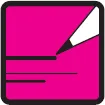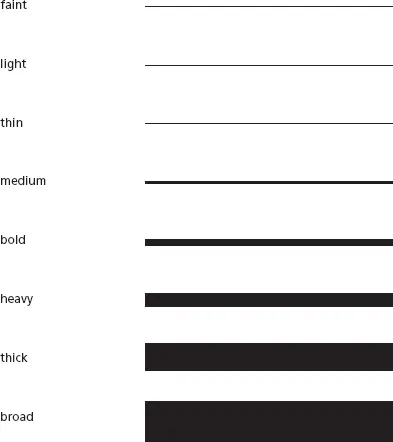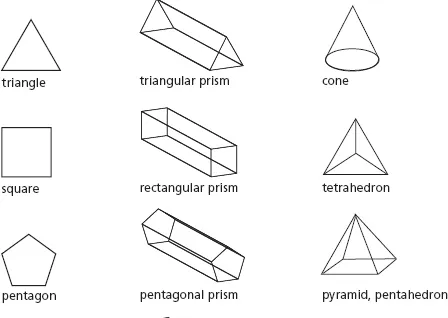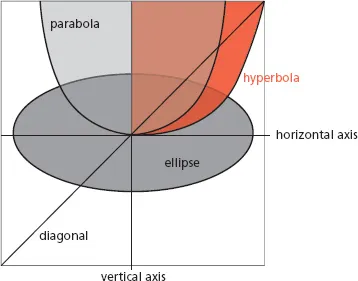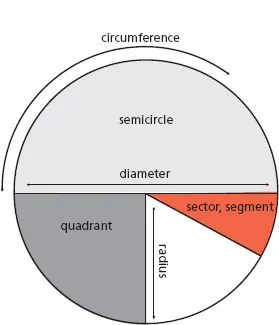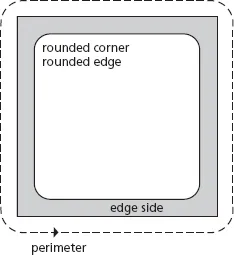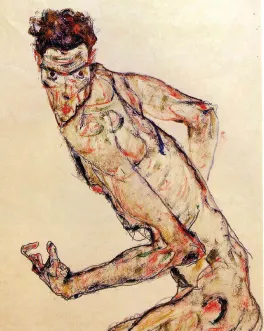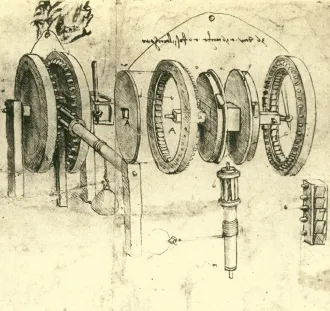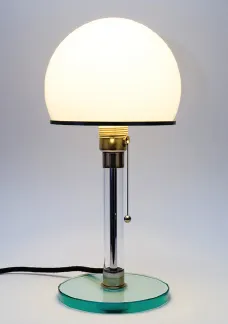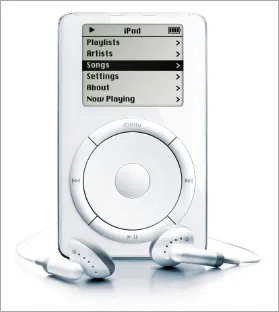![]()
Line
CHAPTER 1
Defining Line
Lines are the most basic units of visual communication. Lines, curves, and angles begin to give shape to concepts, allowing them to take form and assert themselves on reality. From Euclidean geometry we derive idealized form in its purest two-dimensional and three-dimensional expression. Then we add the more subtle human elements of weight, motion, and style, and begin to explore the non-rational lines found in nature. A mastery of the terms used to describe lines, curves, and shapes is the foundation for any accurate discussion of art or design.
Weight
Line Style
Brushstrokes
Angle
Shape
Grid
Circle
2D
3D
Wild Brushstrokes
| aggressive
jagged
meandering
curlicues
heavy
blurry
streaks
frantic |
Fighter, Egon Schiele, 1913
This 1913 self-portrait by Egon Schiele is an excellent example of how line can communicate tension and emotion. The figure’s awkward posture is rendered in fast aggressive lines, some thin, some thick, all jagged and unsteady. The hair on his thighs is created from a few quick meandering curlicues, a hurried suggestion of hair rather than a detailed depiction of it. Color too is applied in wide splotches with a heavy brushstroke or rubbed into the canvas in blurry streaks. The subject’s haunted-eyed expression is one of shock, glaring over his shoulder at the viewer as if we just walked in on him in the middle of some incriminating act. The violence and vulnerability of this moment is communicated through the wild, frantic lines, as if Schiele were desperately trying to escape from his own physical body, even as he immortalized himself in paint.
Schematic Drawing
| integrated
exploded
perimeter
rectangular
irregular
teeth
cylindrical
pegs
freehand |
General and Exploded View of a Hoist, Leonardo da Vinci, circa 1500
This schematic drawing from the notebooks of Leonardo da Vinci provides two views of a machine, both as a functional integrated object and as a separated, or exploded, series of interlocking parts. This exploded view is the foundation of engineering design, still used today in everything from automobile assembly to Lego instructions. It is notable that Leonardo’s drawing is more representational than precisely accurate. The curving perimeters of the various wheels are drawn with the irregular stroke of a quick hand. The rectangular teeth and the little cylindrical pegs are drawn freehand, approximating the idea of the shape rather than precisely rendering its geometric properties. The goal of this drawing is to communicate as clearly as possible the concept and function of the design, in such a way that a skilled machinist would have no trouble picking up where the artist left off and constructing a working machine.
Functionalism
| form
function
disk
cylinder
semispherical
user-centered
intuitive |
Wagenfeld Table Lamp WG 24, Wilhelm Wagenfeld, 1924 Photo: Michael Hoefner
The Wagenfeld Table Lamp is a quintessential industrial design of the Bauhaus era and embodies the philosophy of functionalism. Broadly defined, the functionalist aesthetic demands that the form of an object should express its function, and that all unnecessary ornamentation should be omitted. This lamp is constructed from simple, undecorated geometric forms. A thick glass disk provides a sturdy base from which a transparent cylinder shoots up like the trunk of a tree to support a semispherical reflector bowl. The glass of the reflector bowl is opaque, seeming to hide the internal lighting mechanism, but actually providing the function of diffusing the light for a more balanced glow. The most noteworthy element of the lamp, however, is the simple pull-string on/off switch, a dangling metal cord with a tiny brass sphere on the end that screams “Pull me!,” heralding the dawn of a new era of user-centered, intuitive design.
Curvilinear Design
| scaled
rounded corners
rectangle
gradual curve
edges
concentric circles
cylinder |
First Generation iPod, Apple Inc., 2001
The smoothly shaped and intuitively navigable iPod was the beginning of Apple’s user-centered design revolution. The iPod was designed with a sleek curving geometry and perfectly scaled to fit comfortably in the human hand. The basic form of the device is a thin rectangle with rounded corners and gradually curving edges. The screen is set inside a round-cornered rectangle that mimics the shape of the iPod itself, and the modern sans-serif font of the text is also soft and rounded. The primary curved rectangle form is complemented by several circular design elements, including the concentric circles of the control wheel and the “select” button. The earbuds, more notable for their shape than their sound quality, are composed of flattened semispherical disks affixed to small, pill-shaped cylinders that protect the electrical components, before connecting to the soft, rubbersheathed wires. The entire design is curvilinear and smooth, in service of the belief that the product should be just as easy on the eye as it is easy to use.
Postmodern Sculpture

